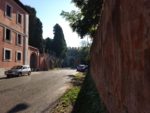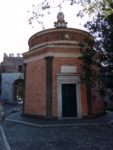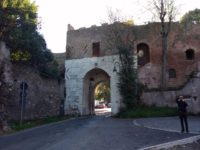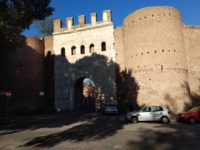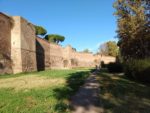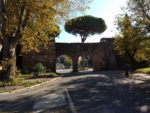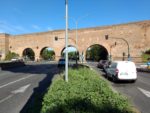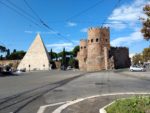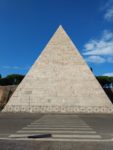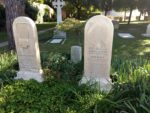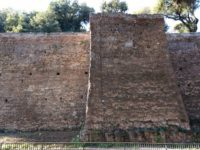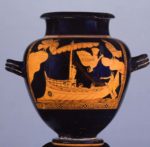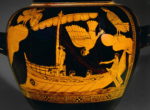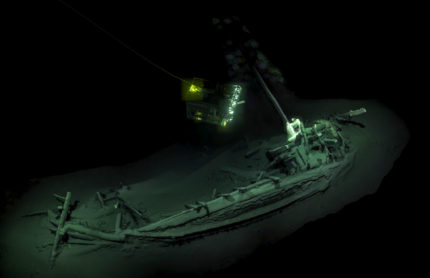This year is the bicentennial of the publication of Mary Shelley’s groundbreaking masterpiece Frankenstein; or, The Modern Prometheus. It is a fitting celebration of the momentous anniversary that the Library of Congress has restored the first motion picture production of Frankenstein and uploaded it to the web for our viewing enjoyment this Halloween.
The first cinematic adaptation of Frankenstein was produced by the Edison Manufacturing Company in 1910. It was directed by James Searle Dawley, former apprentice of Edwin S. Porter, pioneering director of 1903’s The Great Train Robbery, and starred actors from Edison’s stock company — Augustus Phillips as Victor Frankenstein, Charles Ogle as the Monster and Mary Fuller as Victor’s fiancée Elizabeth. Unlike his mentor Porter, Dawley took a static approach, filming staged wide shots straight-on like the audience was viewing a play.
Edison’s title calls it a “liberal adaptation” of the novel, and he wasn’t kidding. Crammed into less than 14 total minutes, the story eschews the now-classic horror elements of Shelley’s story. The creature is not the work of a surgical student who has made liberal use of graveyard materiel. He is created from a sort of alchemical experiment, a witch’s brew of ingredients tossed into a cauldron that produces a crusty carbuncle turned flaming skeleton turned Einstein-haired weirdo.
This was a deliberate choice, the result of growing concerns for the purported immorality of the increasingly popular medium. Edison, keen to keep his most golden goose laying those lucrative eggs, created the first censorship board in 1909 to kowtow to the concerns of moral scolds. Frankenstein was the fist production under the new ethos. The Edison Company catalogue of March 1910 emphasized how bowdlerized the film was as a selling point.
“To those familiar with Mrs. Shelly’s [sic] story it will be evident that we have carefully omitted anything which might be any possibility shock any portion of the audience. In making the film the Edison Co. has carefully tried to eliminate all actual repulsive situations and to concentrate its endeavors upon the mystic and psychological problems that are to be found in this weird tale. Wherever, therefore, the film differs from the original story it is purely with the idea of eliminating what would be repulsive to a moving picture audience.”
Ergo, the complicated questions Mary ShellEy raised about the boundaries of science, the responsibilities of parenthood, the dangers of hubris are replaced by a garden variety morality tale in which a man’s inner evil expresses itself outwardly.
Even though the story had been staged to great success in a myriad adaptations since the 1820s (it was the plays that made the novel a best-seller), the first film of Frankenstein was no a box office success. Critics reviewed it positively, but audiences didn’t respond. After the usual few months of distribution, the prints were withdrawn and the film recycled.
One of them survived, falling into the hands of Wisconsin collector Alois Detlaff in a freakishly round-about way. The rare 35mm print had belonged to his wife’s grandmother Marie Franklin who had a performing jones and used to put on little shows accompanied by film shorts, including Frankenstein. She left her collection to her son. He left it to his son who sold it to a collector who sold it to another collector who sold it to Detlaff in the 1950s.
He knew the film was in his collection and had screened it privately, but the print was in bad condition so he stashed it, only making public its existence after the American Film Institute declared it one of the top 10 most significant lost films in 1980. The movie has been in the public domain since the 1930s and there are many copies of it available online. They’re all pretty terrible, rips from DVDs Detlaff burned of his unrestored print. The Library of Congress went back to the source, restored the film and recreated the missing elements from the originals.
The Library purchased the Dettlaff Collection in 2014 and while it is full of titles we are delighted to add to our holdings, we were especially interested to see Frankenstein, joking that perhaps it might arrive from Wisconsin on a bed of spun gold. While it came in a fairly nondescript can, it didn’t take us long to get the reel into our film preservation lab for a 2K scan in advance of photochemical preservation. From that 2K scan we worked on a digital restoration. The film’s head credits and the first intertitle were missing, but fortunately the Edison Historic Site in East Orange, New Jersey, had a copy of the head credit we could drop into place; the intertitle was recreated using the style of the other titles. We asked Donald Sosin, a highly regarded silent film composer and accompanist, to provide a score.
So without further ado, be he trick or be he treat, here is the first on-screen Frankenstein:
